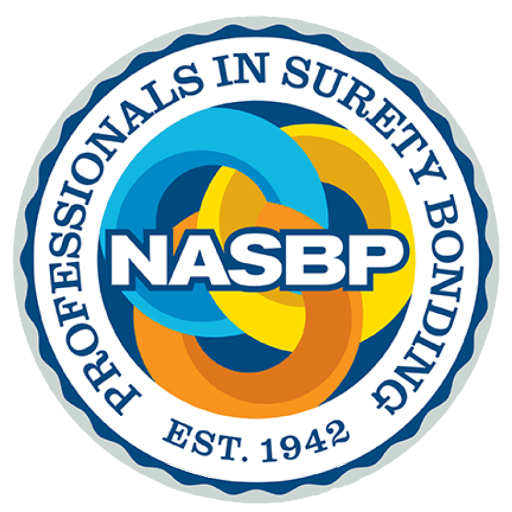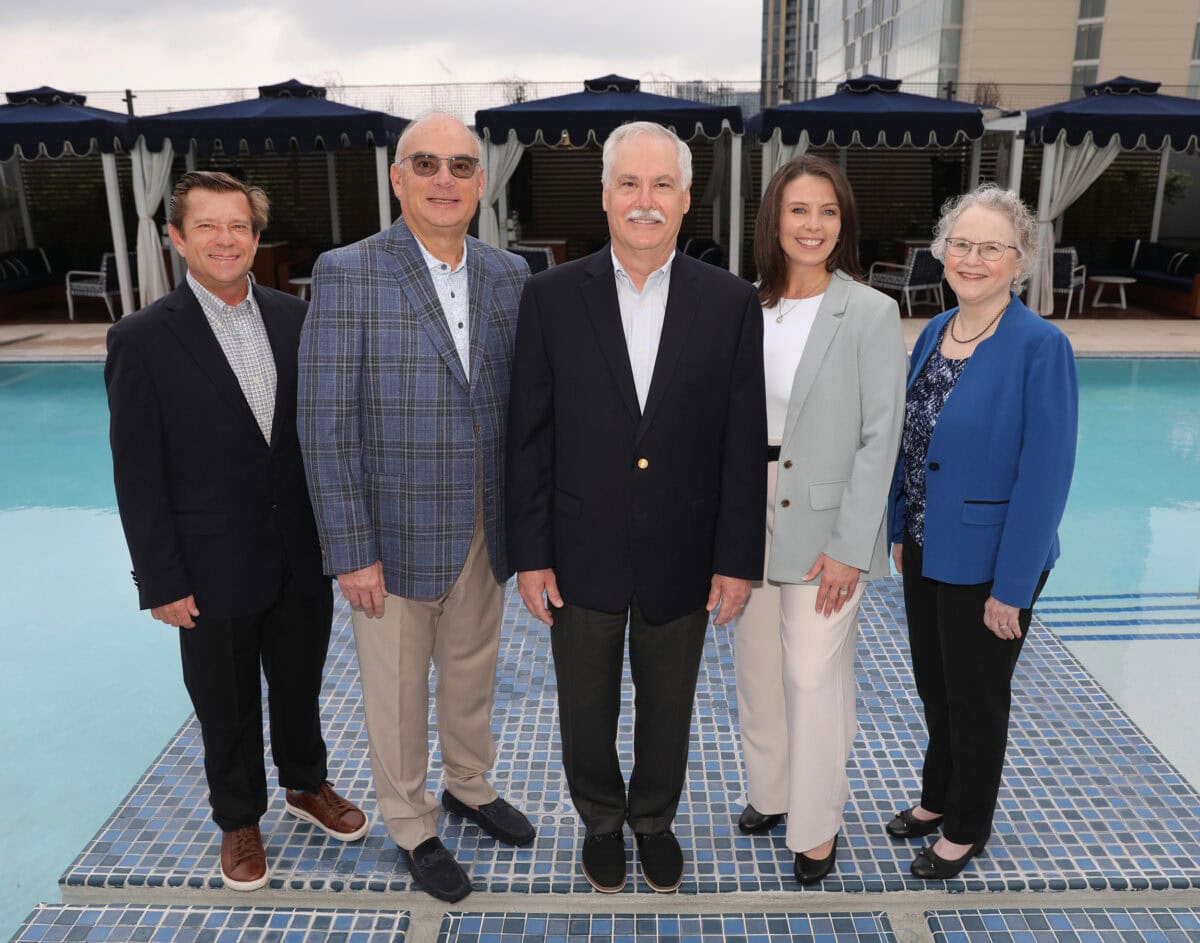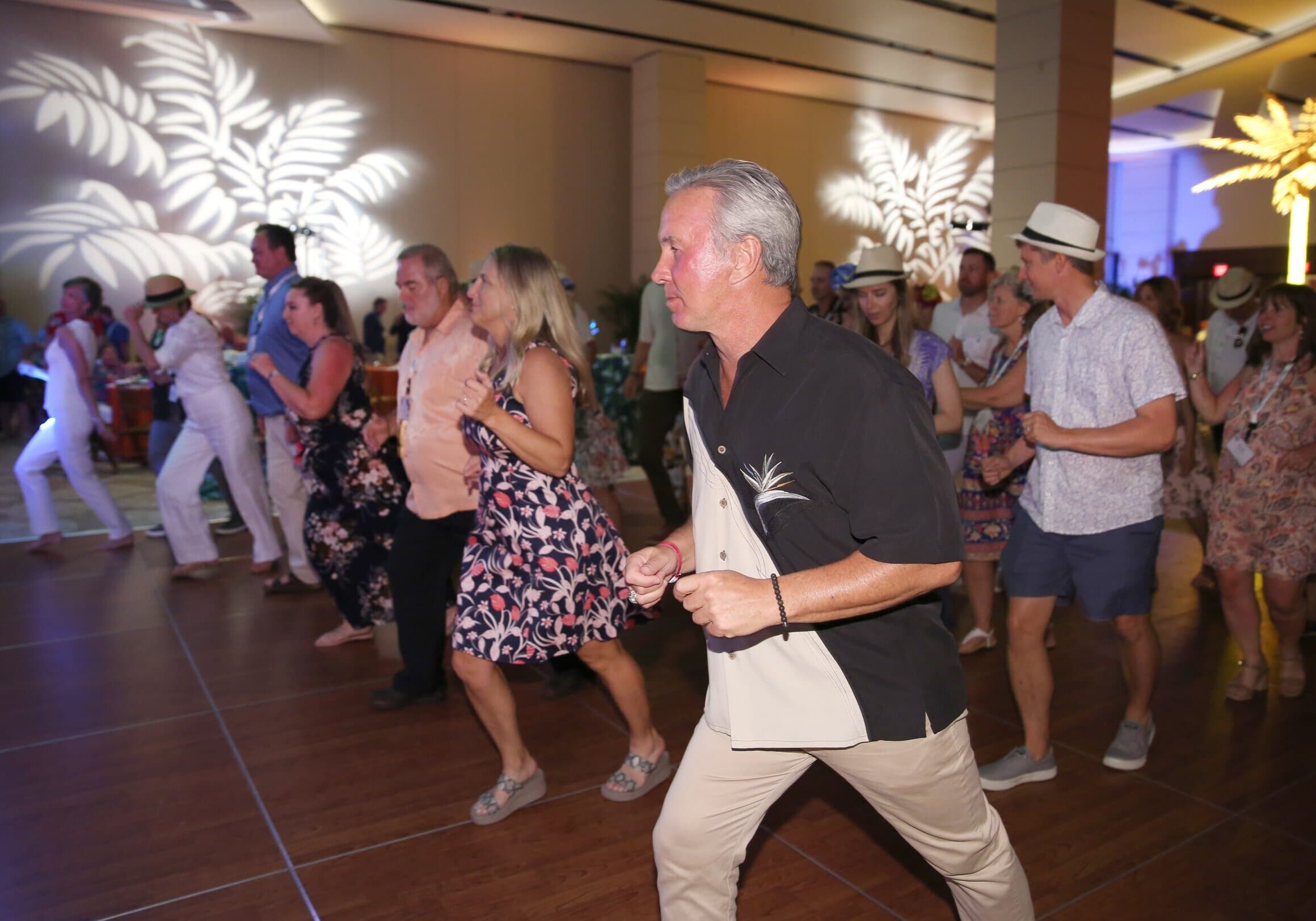
AIA Guide for Sustainable Projects–What Bond Producers and Sureties Should Know
On May 9, 2011, the American Institute of Architects (AIA) released AIA Document D503™-2011, Guide for Sustainable Projects, including Agreement Amendments and Supplementary Conditions (Guide). The Guide is an AIA tool developed to assist industry participants grapple with some of the rapidly evolving sustainable design and construction contract and other risk management issues. Additionally, the Guide includes model contract language that can be used to amend or supplement key AIA contract documents for sustainable projects, including B101™-2007, Owner-Architect Agreement; A101™-2007, Owner-Contractor Agreement; and A201™-2007, General Conditions. The Guide is available as a free download from the AIA website at http://www.aia.org/sustainableprojectsguide.
It should be expressly noted that the Guide is not a contract document or an addendum that can be incorporated into construction contracts. As the ConsensusDOCS 310, Green Building Addendum (GBA), released in November 2009, the Guide is intended to assist owners, design professionals, and contractors address contractual issues unique to sustainable design and construction; however, unlike the GBA, the Guide is not a contract document that can be incorporated into governing documents. Even though the Guide is not a contract, it does have model contract language that might be incorporated into other contracts. It is, therefore, important to gain familiarity with the Guide and how the model contract provisions incorporated into contracts might impact the contractual risks of the contractor—and its performance bond surety.
The Guide provides a useful, brief synopsis of the current state of sustainable design and construction. The Guide uses the term “sustainable” as synonymous with other terms used to describe environmentally responsible design and construction, such as “green design and construction” or “high-performance building.” The Guide provides a brief summary of three of the better known certification programs: Energy Star, Green Globes, and LEED. While the Guide states that AIA does not endorse any particular sustainability certification, AIA has released AIA Document B214-2007, Standard Form of Architect’s Services: LEED Certification. B214-2007 is a scope of services document that establishes duties and responsibilities when the owner seeks LEED certification; unlike ConsensusDOCS 310, GBA, it does not allocate responsibility for achieving green goals or green measures among the project participants.
It is well understood that the terms “green” and “sustainability” mean different things to different people, and it is, therefore, critical that “green” construction contracts contain special definitions to facilitate mutual understanding by all parties. The Guide offers a list of Special Definitions–model language–to incorporate into AIA A201-2007. For instance, the model language offered for “Sustainable Objective” is as follows:
| § 1.1.9.1 Sustainable Objective The Sustainable Objective is the Owner’s goal of incorporating Sustainable Measures into the design or construction of the Project to achieve a Sustainability Certification or other benefit to the environment, enhance the health and well being of building occupants or improve energy efficiency. The Sustainable Objective is defined in the Sustainability Plan.The Guide next provides model language for “Sustainable Measure,” as follows: § 1.1.9.2 Sustainable Measure |
|
| The other definitions included in the Guide are “Sustainability Plan,” “Sustainability Certification,” “Documentation for Certification,” and “Certifying Authority.” | |
| Most of the Guide focuses on the owner-architect agreement, the owner-contractor agreement, and general conditions of the contract. One of the motifs in the Guide that bears observing is that all major participants on a project seeking certification contribute to whether the project achieves that goal. No single participant has complete control over whether the project obtains the necessary points to achieve certification. The Guide emphasizes as follows: | |
| It is important to recognize that successful achievement of the Sustainable Objective will depend not only on the design of the Project but also the Owner’s use and operation of the Project; the Work provided by the Contractor or the work or services provided by the Owner’s other contractors or consultants; or interpretation of credit requirements by a Certifying Authority. | |
| The model language suggested for A201-2007 includes an additional section that clarifies the contractor’s performance responsibilities. Section 3.1.4 model language reads as follows: | |
| § 3.1.4 The Contractor shall perform those Sustainable Measures specifically identified as the responsibility of the Contractor in the Sustainability Plan or as otherwise required by the Contract Documents. | |
| Accordingly, it would be as important for a bidding contractor to review, question, and understand the Sustainable Measures assigned to it as it is to review, question, and understand the plans and specifications on a project.The Guide states what we all know concerning warranties, but it is well worth repeating: contractors should avoid incorporating contractual language that “could be construed as establishing a warranty as it pertains to achievement of the Sustainable Objective.” The Guide includes model contract language that the contractor will construct the project in accordance with the contract documents, which includes the Sustainability Plan, but that the contractor cannot and does not guarantee or warrant that the building will achieve the Sustainable Objective. This model language would be added as Section 3.5.2 to A201-2007: | |
| § 3.5.2 The Contractor shall perform the Sustainable Measures required to be performed by the Contractor in accordance with the Contract Documents, however, nothing contained in this Section 3.5 shall be construed as a guarantee or warranty by the Contractor that the Project will achieve the Sustainable Objective. | |
| Such language or similar language clarifies that the contractor is responsible for performance of the Sustainable Measures assigned to it in the contract documents but that it is not responsible for guaranteeing or warranting achievement of the Sustainable Objective.The Guide emphasizes the importance of the process for handling substitutions on a sustainable project because it is complicated by the fact that the suitability, performance, and reliability of materials and equipment impact the project schedule, the functioning of the project, and whether the Sustainable Measures will be achieved. The Guide offers the following language to add to A201-2007 to place the responsibility for substitutions on the contractor: | |
| § 3.4.2.1 The Contractor shall include with any substitution requests submitted in accordance with Section 3.4.2 a written representation identifying any potential effect the substitution may have on Project’s ability to achieve a Sustainable Measure or the Sustainable Objective. The Architect is entitled to rely on these representations by the Contractor. | |
| This model language possibly could be read to change the traditional risk allocation for substitutions from the architect to the contractor. Section 3.4.2 in A201-2007 provides that “the Contractor shall make substitutions only with the consent of the Owner, after evaluation by the Architect . . . .” And, while this process would still be applicable on a sustainable project, the risks associated with any impacts of the substitution on the project’s ability to achieve a sustainable measure or objective appears to have possibly and subtly shifted away from the architect toward the contractor. As many sustainable projects necessitate the use of materials and equipment that are relatively untested in the field, this model language could present a significant risk for a contractor. Such language could place the responsibility of due diligence for the impacts of substituted materials and technologies on the contractor.The discussion in the Guide notes that the use of such new and untested materials and equipment can create delays on a project, suggesting that it is important that the contractor “verify that the specified materials or equipment can be fabricated and delivered” to the project on schedule. The Guide suggests that “[a]ny delays in delivery, or unavailability of specified materials or equipment, known to the Contractor should be brought to the attention of the Architect as soon as possible so that alternative materials, equipment or sources may be considered.”
What is the role of the architect, the specifier of such new and untested products, for delays from unavailable products or those with long lead times? While the Guide stops short of stating that the contractor should be responsible for the costs associated with such delays, an owner might infer that from the Guide. It should be noted that there is no model language in this section on delays. Nonetheless, this commentary in the Guide would benefit from clarification of the intent. The Guide emphasizes that a number of states and local jurisdictions have adopted policies and laws that establish requirements for sustainable design and construction. A number of jurisdictions require certain projects to achieve a denominated sustainability certification, and others have enacted laws that enumerate performance requirements. AIA A201-2007, Section 3.7, requires the contractor to (1) “comply with and give notices required by applicable laws, statutes, ordinances, codes, rules and regulations, and lawful orders of public authorities applicable to performance of the Work” and (2) “assume appropriate responsibility for such Work.” Thus, codes, laws, and regulations that relate to sustainable design and construction could impose responsibility on the contractor in addition to those required under A201-2007. By way of example, Maryland just enacted enabling legislation that allows local governments in the state to adopt the most recent version of the International Green Construction Code (IGCC). The IGCC is a comprehensive code that establishes minimum regulations for buildings and systems using prescriptive and performance-related provisions. In any local jurisdiction in Maryland that adopts the IGCC, the IGCC will be read into the applicable contracts. In addition, the IGCC allows jurisdictions to customize the code to address local environmental concerns. Therefore, local jurisdictions in Maryland that adopt the IGCC might customize it to address various Chesapeake Bay pollution concerns. Accordingly, it is critical that a contractor understands what is required in the jurisdiction where the project is located. The codes, rules, and regulations change at a rapid rate; so vigilance is important. The Guide cautions contractors, and rightly so, from deleting the mutual waiver of consequential damages language in Section 15.1.6 of A201-2007. The following model language is offered as an addition to A201-2007 in order to address the unique types of consequential damages that might occur on a sustainable project: |
|
| § 15.1.6.3 In addition to those damages included in Section 15.1.6.1 and 15.1.6.2 the mutual waiver in this Section 15.1.6 expressly includes consequential damages resulting from failure of the Project to achieve the Sustainable Objective or one or more of the Sustainable Measures including unachieved energy savings, unintended operational expenses, lost financial or tax incentives, or unachieved gains in worker productivity. | |
| Such a provision in the owner–contractor agreement will help avoid future problems, including costly litigation or arbitration, and will help protect both the contractor and its performance bond surety from such claims.As the Guide notes, the contract could also contain a limitation of liability provision that puts “parameters around a loss and protect[s] the contractor from a potential loss that is difficult to quantify.” If the owner and contractor agree to a limitation of liability, the following could be added to A101-2007: | |
| § 8.6.1 Neither the Contractor, Contractor’s consultants, nor their agents or employees shall be jointly, severally or individually liable to the Owner in excess of _________ ($____), for any failure to perform a Sustainable Measure or failure of the Project to achieve the Sustainable Objective, including breach of contract or negligence not amounting to a willful or intentional wrong. | |
| Such language, or similar, would also place the surety in a better position to assess the risk of bonding a specific sustainable project.Contractors and sureties alike should take heed concerning the Guide’s commentary about substantial completion and final completion. Because the contractor cannot control the review and approval process of a certifying authority and is likely not responsible for performing and then collecting all the data necessary to support achievement of a Sustainable Objective, a contractor should not execute a contract that requires achievement of the Sustainable Objective as a condition precedent to substantial completion. The Guide provides the following model language to address that issue to add to the end of Section 9.8.1 of A201-2007: | |
| § 9.8.1 . . . Except for Documentation for Certification which by its nature must be provided after Substantial Completion, the Contractor shall submit Documentation for Certification required from the Contractor by the Contract Documents no later than the date of Substantial Completion. Verification that the Project has achieved the Sustainable Objective, or the actual achievement of the Sustainable Objective alone, shall not be a condition precedent to issuance of a Certificate of Substantial Completion in accordance with Section 9.8.4. | |
The Guide notes that, at the time of substantial completion, the contractor may still be responsible under the contract for certain Sustainable Measures necessary to achieve the Sustainable Objective. The Guide states that a performance bond, such as AIA A312-2010, may provide the owner with assurance that the contractor’s obligations are fulfilled. The Guide suggests, in addition, that the owner might consider extending the contractor’s one-year correction period under Section 12.2.2.1 of A201-2007, “taking into consideration the estimated date when verification of the Sustainable Objective will occur.” Verification of the Sustainable Objective can take the third-party verifier one to two years.
Extending the correction period until the Sustainable Objective is verified is problematic, from the standpoint of the contractor and its surety. First, forecasting the period of time that it will take the third-party rating system verifier to process the information and certify the Sustainable Objective is an amorphous exercise, at best. And, if the contractor’s responsibilities are to “perform those Sustainable Measures specifically identified as the responsibility of the Contractor” (see model language Section 3.1.4, above) in the contract documents, then whether or not the Sustainable Objective is achieved is irrelevant to the contractor’s correction period. In other words, the contractor is responsible for performing the identified Sustainable Measures–not for guaranteeing or warranting achievement of the Sustainable Objective (see model language Section 3.5.2, above).
The Guide continues with what might be construed as conflicting commentary about timing of certification concerning final completion of a project. We all know that final completion of a project under A201-2007 occurs when the contractor’s work has been completed in accordance with the contract documents and the balance of the contract is due and payable to the contractor. The Guide notes that final completion is “complicated by the fact that verification that the Project has achieved the Sustainable Objective may not occur until sometime after Substantial Completion.” Indeed, by the time that the third-party entity has verified certification, the contractor may have completed the punch list and performed all of its obligations under the contract documents. The Guide suggests that, yet again, the owner could look for protection to a performance bond or an extended warranty.
On the performance bond issue, the Guide needs clarification of the intent. If it provides model language that the contractor’s responsibility is to perform the Sustainable Measures assigned to it in the contract documents and that the contractor is not guaranteeing or warranting achievement of the Sustainable Objective, then why would a performance bond or an extended warranty be recommended to address this issue? If the contractor has performed its obligations under the contract, then whether or not the project achieves certification is simply not the responsibility of the contractor—or its performance bond surety. Indeed, contractors should ensure that no payment provisions in the contract predicate release of retainage and/or final payment on achievement of the Sustainable Objective.
Sustainable design and construction is developing and evolving at a rapid rate; the AIA Guide is a valuable tool to assist stakeholders in assessing and managing contractual risk allocation on sustainable projects. As noted above, certain sections of the Guide, however, lend themselves to differing, if not conflicting, interpretations, which will not inure to the benefit of contractors–or their performance bond sureties. Indeed, these sections may be interpreted in a way to invite a contracting party to shift traditional risk allocations. While sustainable design and construction may very well challenge project stakeholders with new roles, responsibilities, and risks, those new roles, responsibilities, and risks should be assumed by the party in the best position to control those responsibilities and risks.
The AIA routinely seeks input and comments from organizations representing industry stakeholders and invited NASBP to provide feedback on its published Guide. As a result, NASBP and AIA have engaged in recent discussions regarding how some of the language in the Guide may need revision to dispel differing interpretations, so that users of the Guide have clear guidance on and understanding of the roles, responsibilities, and risks of the principal stakeholders involved in sustainable projects. NASBP and AIA plan to continue this dialogue to explore the possibility of inserting clarifying language in the next edition of the Guide.
Contractors, bond producers, and sureties should be vigilant in reviewing sustainable project contracts to ensure that the contractor–and its surety–are not inadvertently assuming inappropriate risks. More and more, green building rating systems are incorporating life-cycle and energy use measurement and verification into their certification processes. Contractors and sureties should ensure that they are not unknowingly assuming responsibility for these matters. The contractor can only control its performance of the plans and specifications; it cannot control the design (on a traditional design-bid-build project), nor can it control the operations and maintenance of the building systems.
It should be noted, however, that green building contracts often contain performance-based specifications. These specifications increase the risk for sureties because there is no owner’s warranty of the sufficiency of those plans and specifications and liability for design failure is shifted to the contractor. Observers should note that, if a contract transfers design risks to the contractor, such risk-shifting, either intentionally or unintentionally, favors larger, better capitalized, and more experienced contractors. Such risk-shifting requirements tend to reduce competition for contracts because smaller contractors generally do not possess either the financial or experiential wherewithal to successfully bid on and, if awarded, complete a contract with such risk-shifting provisions.
The surety can reduce its risks on a green building contract for which it issues bonds by reviewing the contract risk exposures, as discussed above, and assessing if those are risks it knowingly and willingly wishes to take. The contractor, the bond producer, and the surety should review and take note of any performance specifications in the contract. While sureties generally are not eager to bond projects with performance specifications, design-build contracts, by their very essence, contain performance-based specifications. Performance bonds for design-build contracts are now more readily available than even a few years ago. Thus, the surety industry has had experience assessing whether or not to issue a bond on a contract with performance-based specifications. From the surety’s perspective, the evaluation comes down to whether its contractor has reasonably controlled the contractual risks and whether it is willing to bond such a contract.
The author of this article is Martha L. Perkins, Esq., a Partner in the Washington, DC office of Whiteford, Taylor & Preston, LLP. She can be reached at mperkins@wtplaw.com.
This article is provided to NASBP members, affiliates, and associates solely for educational and informational purposes. It is not to be considered the rendering of legal advice in specific cases or to create a lawyer-client relationship. Readers are responsible for obtaining legal advice from their own counsels, and should not act upon any information contained in this article without such advice.
Get Important Surety Industry News & Info
Keep up with the latest industry news and NASBP programs, events, and activities by subscribing to NASBP Smartbrief.




